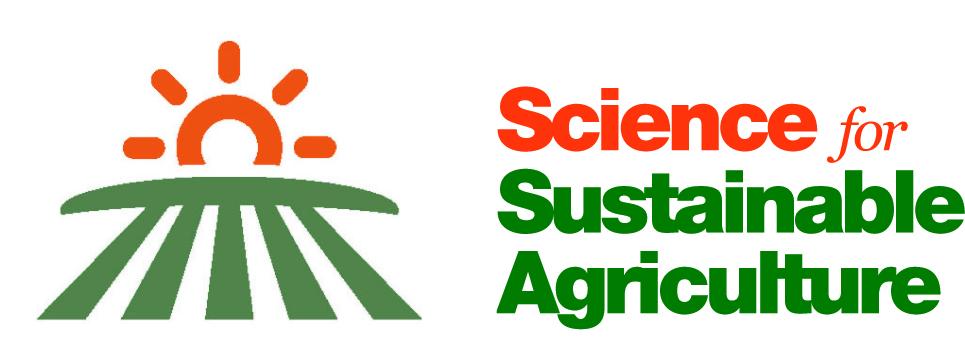We need a much better conversation about science and technology in agriculture

Meeting humankind’s burgeoning food and energy requirements sustainably is an urgent priority for policymakers around the world.
As conservation scientist Professor Andrew Balmford told a meeting of the All-Party Parliamentary Group on Science and Technology in Agriculture last year:
“Figuring out how to feed, clothe and power 11 billion people without causing mass species extinction and wrecking the climate is this century’s greatest challenge."
Professor Balmford was equally clear about the solution: optimising high-yield, high-tech food production on existing farmland, so reducing the need to bring unfarmed habitats into cultivation.
“Preserving diverse life while meeting humanity’s needs will mean enormous trade-offs, but the evidence is starting to point in one direction. Most species fare much better if habitats are left intact, which means reducing the space needed for farming. So areas that are farmed need to be as productive as we can possibly make them,” he said.
I agree. The combined challenges of global food and nutrition security, climate change and protection of the world’s natural resources and biodiversity will not be achieved by turning back the clock, as some would have us believe.
Farmers will need access to the most advanced scientific and technological innovations, for example in crop and livestock genetics, data science, biologicals, precision engineering and digital technology.
But farmers will also need the social licence to use those tools, because consumer interest in the provenance, sustainability, ethics and environmental footprint of our food has never been greater.
Here we have a potential problem.
In every other walk of life, scientific innovation and new technology are readily accepted because they make our lives easier, better, healthier, more efficient.
We do not hanker after mobile phones the size of a brick, or modems that take an age to connect to the internet. And at the height of the Covid pandemic we looked to modern genetic science – GM and gene editing technologies – to develop effective vaccines in record time. We didn’t turn to homeopathy or leeches for a cure.
But when it comes to food and agriculture, the use of science and technology is often viewed with suspicion and mistrust.
A few years ago, BBC journalist Tom Heap told the All-Party Group that a major barrier to consumer acceptance of science in agriculture is a perception that old-fashioned farming is in some way better and more ‘natural’, and that the application of scientific innovation is ‘unnatural’. This perspective is often reinforced by food marketeers’ rather idealised depiction of farming and the countryside.
But of course farming is not, and never has been ‘natural’. As the international economist Steven Cerier observed in 2019:
“.. the reality is that none of the food we eat is in its natural state. If it was, much of the food we consume would be inedible and of very low nutritional value. Only by the manipulation of genes through various plant breeding techniques have we been able to develop a wide variety of tasty and nutritious foods.”
At the same time, farmers spend much of their time trying to sustain crops in the face of ‘natural’ intrusion, e.g. in the form of weeds, diseases, insects and other pests. Scientific innovation increasingly offers ways to protect harvests while minimising the impact on unfarmed habitats and environments.
When former science minister David (now Lord) Willetts addressed the All-Party Group some years ago, he insisted that feeding the world sustainably would be achieved through empiricism and rationality, not by campaigns intent on recreating some fake nostalgic past.
He compared the Apple computer with the humble tomato and contended that the modern tomato was as much an achievement of scientific research and innovation over decades as Apple products, yet the food industry seemed intent on pretending otherwise, instead presenting our food as a benevolent gift from Mother Nature.
Lord Willetts laid down a challenge to the agri-food industry to do more to advertise and celebrate the fact that modern agriculture is a high-tech, scientific endeavour.
Recent consumer research commissioned by the policy group Science for Sustainable Agriculture has underlined the urgent need for such action.
The research, conducted by specialist agency England Marketing Ltd, found that, even among self-identified ‘foodies’, there is a disturbing lack of awareness of where our familiar food crops come from, and how much scientific innovation has gone into their development.
Most respondents were reportedly shocked to discover that the ‘natural’ versions of everyday foods such as sweetcorn, carrots and bananas are almost unrecognisable (and inedible) compared to their modern equivalents, and that scientific intervention has underpinned these transformations.
Similarly, very few consumers were aware that none of the familiar food crops grown on British farms are native to this country. With the exception of bananas and oranges, most respondents assumed that crops such as wheat, barley, oats, sugar beet and potatoes are all native to Britain.
In fact, all the food crops grown on British farms originated in other parts of the world, e.g. wheat, barley and oats from the Middle East, potatoes from South America, and sugar beet from central Europe. All have been adapted to our growing conditions and markets by the most amazing scientific intervention and human ingenuity, and many of the food crops grown today bear only a passing resemblance to their ‘wild’ or ‘natural’ versions.
This consumer research raises serious questions about the validity of current public discussions around issues such as precision breeding, when most consumers appear unaware of the level of scientific intervention which has already gone into the development of our everyday foods.
War in Ukraine and the cost-of-living crisis have brought a renewed urgency to the food security issue, and this research has highlighted the need to redouble efforts to improve public understanding of the importance of agricultural science and innovation in safeguarding our future food supply. As science communicator Dr Julian Little observed:
“There is a clear understanding among consumers of the many challenges facing our food supply, and the need for urgent action to tackle those challenges. As the world gets hotter, and people get hungrier, more effective communication about the role of science in food and agriculture, delivered by trusted sources, using the right language and terminology, will be absolutely critical.”
Several years ago, before I became chair, the All-Party Group engaged with Ian Blatchford, Director of the Science Museum, on this topic. Members and stakeholders of the Group expressed concern that the museum’s existing agriculture exhibit – comprising vintage farm machinery and a series of dioramas of traditional agricultural landscapes – did not provide a cutting-edge experience and had not changed significantly since the 1960s.
Ian Blatchford and his colleagues agreed, and in 2017 the Science Museum outlined plans to replace its agricultural exhibit with a ‘contemporary agriculture’ gallery reflecting the renewed policy focus and wider public interest in agricultural science and innovation.
The old exhibit has since been removed, but the new gallery is not yet in place.
Agri-science, described by Lord Willetts as ‘one of the eight great technologies’, and an area in which Britain’s research institutes and universities are world-leading, surely merits the attention afforded by the museum to other scientific disciplines.
And with over 3 million visitors a year, many of them schoolchildren, such an exhibit could be transformative in opening the eyes of this and future generations to the enormous contribution of science and innovation to farming past, present and future.

